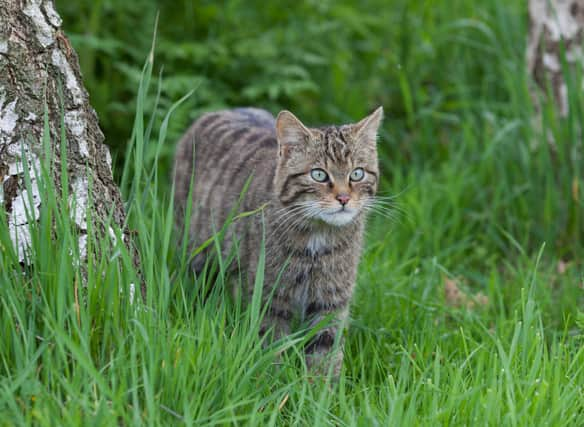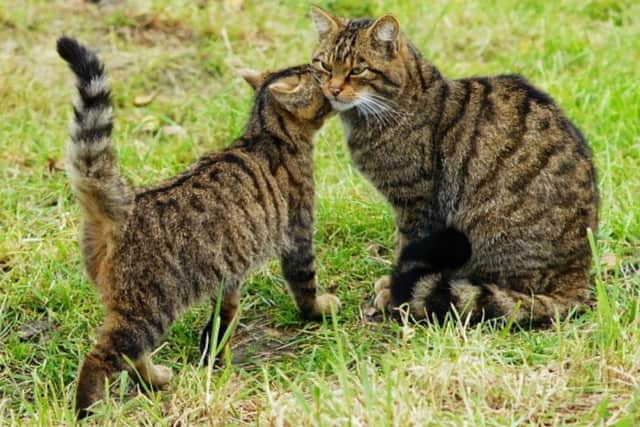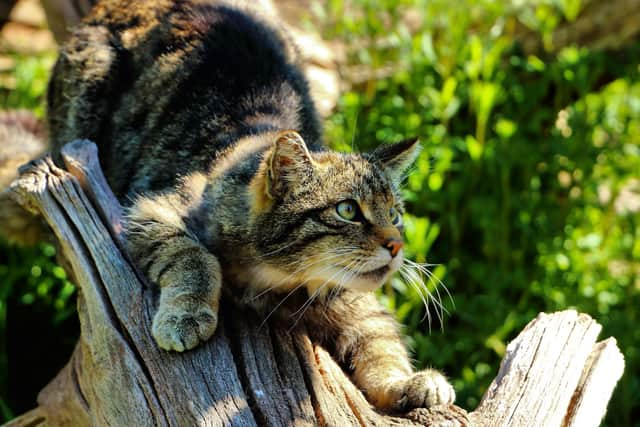Scottish Wildcats Close to Extinction: What are they, where do they live, how can we help?


As NatureScot tells us: “The Scottish wildcat (Felis silvestris) is one of our most elusive carnivores and the only native member of the cat family still found in the wild in Britain.
“The wildcat is a European protected species.”
Broadly, they are described as similar in size to domestic tabby cats but larger and stronger. Once abundant, the population has been threatened by habitat loss, persecution and hybridisation via breeding with domestic cats. Some suggest that there may be no wild-living specimens left that do not have domestic cat ancestry so they may exist in even fewer numbers depending on how they are defined.
Advertisement
Hide AdAdvertisement
Hide AdAccording to a BBC report: “Biodiversity Minister Lorna Slater said the very existence of an iconic and much-loved species was under threat.
“Previous research concluded the Scottish wildcat was "functionally extinct".
“The latest research is the culmination of the Scottish Wildcat Action project - a collaborative effort led by Scotland’s nature agency NatureScot, which ran from 2015 to 2020.”
In short, the five-year project found the wildcat population could not be considered ‘viable’ given their numbers that reflected near extinction. However, it cannot all be doom and gloom and the project team has made recommendations on how to save the species. There have also been uplifting news stories of late.
For example, the Royal Zoological Society of Scotland wrote: “After years of extensive preparations by the Saving Wildcats conservation partnership project, the release of 22 wildcats into the Cairngorms National Park began last week (June) as part of landmark efforts to save this charismatic species from extinction within Scotland.”
They continue: “Approved under licence by NatureScot, the trial releases are the first-ever conservation translocation of wildcats in Britain in an effort to help restore Scotland’s critically endangered wildcat population.”
In other news from this year, a conservation centre in Scotland welcomed eleven Scottish wildcat kittens. This marked the second year in a row that litters were successfully born. Turning the situation around for these ‘Highland Tigers’ is most assuredly an uphill battle but the first step is to educate ourselves on the species itself and their needs.
With expert-recommended advice, here is an overview of Scottish Wildcats including how to identify them, where they live and what we can do to support their survival.


What is a Scottish Wildcat?
Advertisement
Hide AdAdvertisement
Hide AdEdinburgh Zoo explains: “Scotland’s wildcats are a unique and highly threatened sub-population of the European wildcat, Felis silvestris silvestris.
“Although they may look similar to domestic (pet) cats, they do have some unique features, including their blunt and bushy tails and their genetic make-up!
“It can be very difficult to tell the difference between a wildcat, a domestic tabby, or a hybrid from looks alone.”
Reportedly, the species is native to ‘Europe and the Caucasus’ and within Britain is found only in Scotland; particularly in the Scottish Highlands. They are known to live as long as twelve years in the wild and their characteristically stripey coats and voluminous tails have earned them the nickname “Highland Tigers”.
How many wildcats are there?
Due to widespread hybridisation of the species it is difficult to arrive at an exact figure. Some researchers suggest that it is possible for even no wildcats to live in Scotland if having domestic cat ancestry invalidates that category.
That said, in a report this year from The Guardian, it was noted that the International Union for Conservation of Nature estimated that the wild population was as few as 30 in Scotland.
Distinguishing Scottish Wildcats from Tabbies
According to Discover Wildlife: “Scottish wildcats are similar in size to a domestic tabby cat but larger and more robust.
“The average size of the head and body of a male wildcat is 59cm, the average female is 54cm.
“Tail length can range from 26cm to 33cm.
“On average, adult males weigh over 5kg and females 4kg.”
Advertisement
Hide AdAdvertisement
Hide AdUnfortunately, it is challenging to distinguish a ‘true’ wildcat from a hybrid specimen as research shows that there is a great deal of ‘genetic dilution’ in the population.
Broadly, look out for bushy tails with a blunt black tip, thick and dark stripes on bodies and a lack of white patches; this is more likely a genuine wildcat.


What can we do to help them?
Although there are organisations carrying out important work to conserve and protect Scottish wildcats, it is important that we not become complacent. Adopting a wildcat or donating in general to a group working to support them is recommended.
The Royal Zoological Society of Scotland writes: “Please donate to Saving Wildcats and your gift will help to build an innovative wildcat conservation ‘breeding for release’ centre at our Highland Wildlife Park.
“The first of its kind in the UK, the centre will establish founder populations of wildcats and prepare them for life in the wild.
“Together we can return the Highland Tiger to the remote wild landscapes where they belong.”
Comments
Want to join the conversation? Please or to comment on this article.
